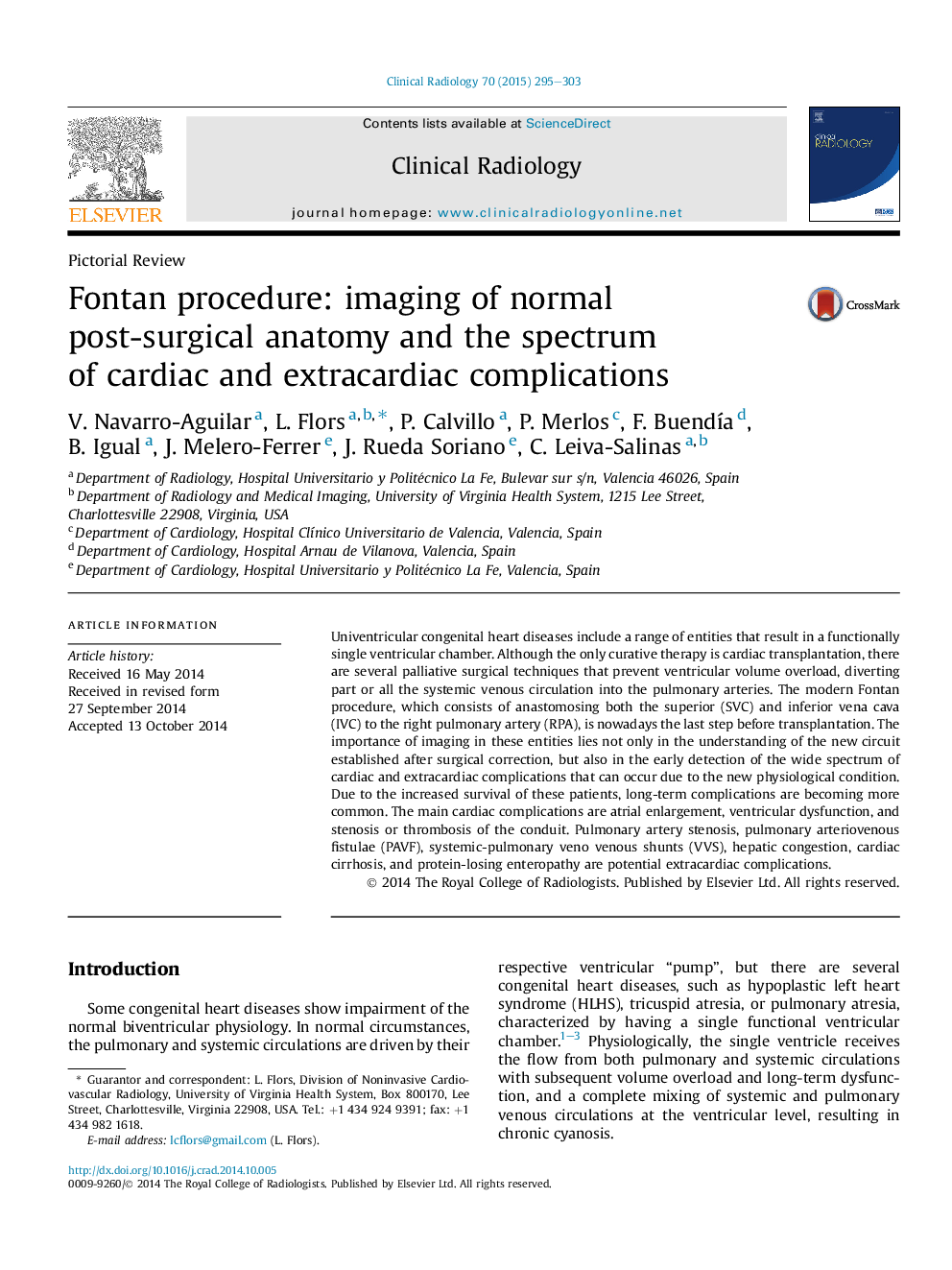| Article ID | Journal | Published Year | Pages | File Type |
|---|---|---|---|---|
| 3981585 | Clinical Radiology | 2015 | 9 Pages |
•Fontan procedure is the main palliative surgical procedure for univentricular heart correction.•Fontan procedure entails the anastomosis of SVC and IVC to the RPA.•Complications are becoming more common due to the increased survival of patients with Fontan.
Univentricular congenital heart diseases include a range of entities that result in a functionally single ventricular chamber. Although the only curative therapy is cardiac transplantation, there are several palliative surgical techniques that prevent ventricular volume overload, diverting part or all the systemic venous circulation into the pulmonary arteries. The modern Fontan procedure, which consists of anastomosing both the superior (SVC) and inferior vena cava (IVC) to the right pulmonary artery (RPA), is nowadays the last step before transplantation. The importance of imaging in these entities lies not only in the understanding of the new circuit established after surgical correction, but also in the early detection of the wide spectrum of cardiac and extracardiac complications that can occur due to the new physiological condition. Due to the increased survival of these patients, long-term complications are becoming more common. The main cardiac complications are atrial enlargement, ventricular dysfunction, and stenosis or thrombosis of the conduit. Pulmonary artery stenosis, pulmonary arteriovenous fistulae (PAVF), systemic-pulmonary veno venous shunts (VVS), hepatic congestion, cardiac cirrhosis, and protein-losing enteropathy are potential extracardiac complications.
